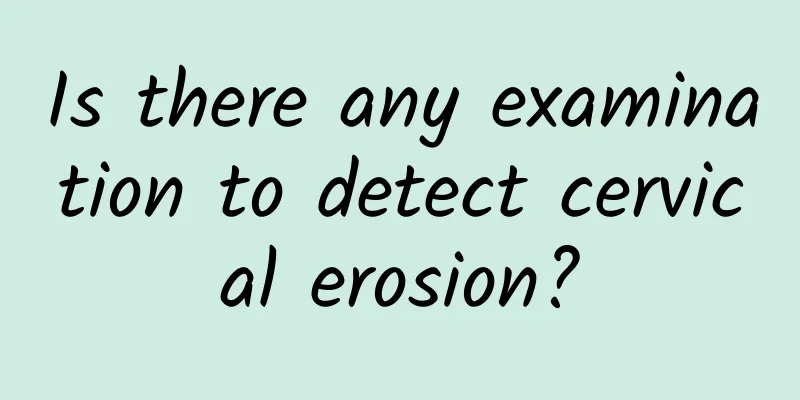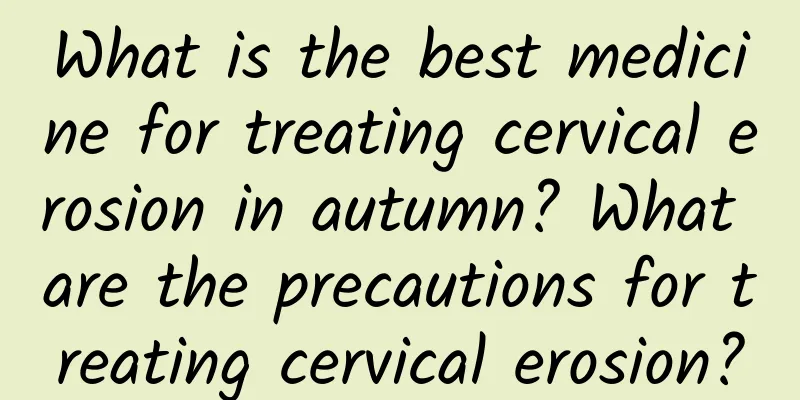Is there any examination to detect cervical erosion?

|
Cervical erosion can be detected through gynecological examination, cervical cytology test (TCT) and HPV test. Cervical erosion is a common gynecological phenomenon, usually related to changes in hormone levels, inflammation or infection. In most cases, there is no need to worry too much, but other serious diseases need to be ruled out through examination. 1. Gynecological examination Gynecological examination is the main method for preliminary screening of cervical erosion. The doctor uses a colposcope to examine the surface of the cervix to observe whether there is erosion, congestion or abnormal secretions. This method is simple and intuitive, but it cannot determine the specific cause of erosion and needs to be combined with other examinations for further diagnosis. 2. Cervical cytology test (TCT) The TCT test collects cell samples from the surface of the cervix to detect abnormal cells. This method can detect cervical precancerous lesions or cervical cancer at an early stage and is an important screening method for patients with cervical erosion. If the TCT result is abnormal, further pathological examination may be required. 3. HPV testing HPV human papillomavirus infection is one of the main causes of cervical erosion and cervical cancer. HPV testing can determine whether there is high-risk HPV infection. If the test result is positive, it is necessary to combine the TCT result to evaluate whether further treatment or follow-up is needed. Treatments for cervical erosion vary depending on the cause. If it is physiological erosion, such as caused by changes in hormone levels, no special treatment is usually required and regular follow-up is sufficient. If it is pathological erosion, such as inflammation or infection, medication, physical therapy or surgery should be used according to the specific situation. Medication includes the use of antibiotics, anti-inflammatory drugs or vaginal suppositories; physical therapy such as laser, freezing or electrocautery; surgical treatment is suitable for severe cases, such as cervical conization. Although cervical erosion is common, it should not be ignored. Regular gynecological examinations, TCT and HPV testing are the key to preventing and early detection of cervical lesions. If abnormalities are found, you should seek medical attention in time and follow the doctor's advice to avoid worsening of the condition. |
<<: Pregnant women have abnormally white vaginal discharge
>>: Does abnormal leucorrhea affect pregnancy?
Recommend
Prevent chest expansion! 3 moves to shape firm and beautiful breasts
By bringing the shoulder blades closer together, ...
Beyonce liquid weight loss Demi Moore raw food fat
Not only female stars are losing weight crazily, ...
Can cervical warts be transmitted through saliva?
Cervical warts are one of the common sexually tra...
Do you know the harm of dysmenorrhea?
The word dysmenorrhea should be familiar to every...
What are the symptoms of ovarian cysts and what causes them
What are the symptoms of ovarian cysts? What caus...
Causes of irregular menstruation are related to occupational factors
The cause of irregular menstruation is related to...
Get rid of the extra fat around your waist and abdomen! Wu Mingzhu: Drinking summer heat-clearing slimming tea can remove dampness and reduce fat
As we are about to enter the hot summer, waist an...
Pay attention to the precautions after abortion to control the condition
With the improvement of living standards, people ...
What fruits can patients with pelvic effusion eat?
What fruits can patients with pelvic effusion eat...
What are the symptoms of habitual miscarriage? What are the precautions for habitual miscarriage?
After patients have habitual miscarriage, they ar...
How harmful are frequent abortions for women? Knowing these dangers, would you still dare to have frequent abortions?
With the development of technology and the excess...
How to treat uterine fibroids better? Surgical treatment of uterine fibroids
Uterine fibroids are a common gynecological disea...
Can medication for Bartholinitis reduce inflammation?
Acute Bartholinitis first invades the gland duct,...
How to break through the weight loss plateau? Famous weight loss doctor: 4 more to help burn fat
The most feared thing about weight loss is encoun...
Running is the best medicine! Treat 7 diseases
Every day I tell my patients, "Exercise is y...









